The Dunwich Horror and OthersGorgons and Hydras, and Chimaeras—dire stories of Celaeno and the Harpies—may reproduce themselves in the brain of superstition—but they were there before. They are transcripts, types—the archetypes are in us, and eternal. How else should the recital of that which we know in a waking sense to be false come to affect us all? Is it that we naturally conceive terror from such objects, considered in their capacity of being able to inflict upon us bodily injury? O, least of all! These terrors are of older standing. They date beyond body—or without the body, they would have been the same… That the kind of fear here treated is purely spiritual—that it is strong in proportion as it is objectless on earth, that it predominates in the period of our sinless infancy—are difficulties the solution of which might afford some probable insight into our ante-mundane condition, and a peep at least into the shadowland of pre-existence.—Charles Lamb: Witches and Other Night-FearsI.When a traveller in north central Massachusetts takes the wrong fork at the junction of Aylesbury pike just beyond Dean's Corners he comes upon a lonely and curious country.
The ground gets higher, and the brier-bordered stone walls press closer and closer against the ruts of the dusty, curving road. The trees of the frequent forest belts seem too large, and the wild weeds, brambles and grasses attain a luxuriance not often found in settled regions. At the same time the planted fields appear singularly few and barren; while the sparsely scattered houses wear a surprisingly uniform aspect of age, squalor, and dilapidation.
Without knowing why, one hesitates to ask directions from the gnarled solitary figures spied now and then on crumbling doorsteps or on the sloping, rock-strewn meadows. Those figures are so silent and furtive that one feels somehow confronted by forbidden things, with which it would be better to have nothing to do. When a rise in the road brings the mountains in view above the deep woods, the feeling of strange uneasiness is increased. The summits are too rounded and symmetrical to give a sense of comfort and naturalness, and sometimes the sky silhouettes with especial clearness the queer circles of tall stone pillars with which most of them are crowned.
Gorges and ravines of problematical depth intersect the way, and the crude wooden bridges always seem of dubious safety. When the road dips again there are stretches of marshland that one instinctively dislikes, and indeed almost fears at evening when unseen whippoorwills chatter and the fireflies come out in abnormal profusion to dance to the raucous, creepily insistent rhythms of stridently piping bull-frogs. The thin, shining line of the Miskatonic's upper reaches has an oddly serpent-like suggestion as it winds close to the feet of the domed hills among which it rises.
As the hills draw nearer, one heeds their wooded sides more than their stone-crowned tops. Those sides loom up so darkly and precipitously that one wishes they would keep their distance, but there is no road by which to escape them. Across a covered bridge one sees a small village huddled between the stream and the vertical slope of Round Mountain, and wonders at the cluster of rotting gambrel roofs bespeaking an earlier architectural period than that of the neighbouring region. It is not reassuring to see, on a closer glance, that most of the houses are deserted and falling to ruin, and that the broken-steepled church now harbours the one slovenly mercantile establishment of the hamlet. One dreads to trust the tenebrous tunnel of the bridge, yet there is no way to avoid it. Once across, it is hard to prevent the impression of a faint, malign odour about the village street, as of the massed mould and decay of centuries. It is always a relief to get clear of the place, and to follow the narrow road around the base of the hills and across the level country beyond till it rejoins the Aylesbury pike. Afterwards one sometimes learns that one has been through Dunwich.El Horror de Dunwich y otros relatosLas Gorgonas, las Hidras y las Quimeras, las historias terribles de Celeno y las Harpías, pueden reproducirse en el cerebro supersticioso, pero existieron antes. Son transcripciones, tipos, los arquetipos están en nosotros y son eternos. ¿De qué otro modo puede afectarnos a todos el relato de aquello que, despiertos, sabemos que es falso? ¿Acaso concebimos de modo natural el terror por tales objetos al considerarlos capaces de infligirnos daño físico? ¡En absoluto! Esos terrores vienen de antiguo. Vienen de tiempos anteriores al cuerpo, o son ajenos a nuestro cuerpo... Que el tipo de miedo del que hablamos aquí sea puramente espiritual, que su vigor sea proporcional a su falta de objeto sobre la Tierra, que predomine en el período de nuestra inocente infancia... son dificultades cuya solución puede estar en alguna probable percepción a nuestra condición anterior al nacimiento, y en una mirada a la tierra en sombras de la preexistencia.(Charles Lamb, Brujas y otros terrores nocturnos).ICUANDO el que viaja por la zona norte del centro de Massachusetts toma la bifurcación equivocada en el cruce de la carretera Aylesbury, después de pasar Dean's Corners, llega a una región solitaria y extraña. El terreno sube y los muros de piedra coronados de maleza se van cerrando cada vez más sobre las polvorientas curvas del camino. Los árboles de los numerosos bosques circundantes parecen demasiado grandes, y la hierba, las zarzas y los pastos salvajes alcanzan un esplendor que no se encuentra a menudo en las regiones habitadas. Al mismo tiempo, los campos cultivados son escasos y áridos; mientras que las casas dispersas exhiben unaspecto sorprendentemente uniforme de vejez, miseria y decadencia. Sin saber por qué, uno vacila en pedir instrucciones a las figuras solitarias y arrugadas que alcanza a ver aquí y allá en los umbrales ruinosos o en las empinadas y pedregosas laderas. Son personas tan silenciosas y furtivas que uno, de algún modo, se siente enfrentado a cosas prohibidas, cuyo contacto es mejor rehuir. La sensación de extraña inquietud aumenta cuando una cuesta del camino permite ver las montañas cerniéndose sobre los bosques. Las cúspides son demasiado redondeadas y simétricas como para dar una sensación cómoda y natural, y a veces el cielo recorta en silueta, con especial claridad, los curiosos círculos de altos pilares de piedra que coronan la mayoría de ellas.
Desfiladeros y barrancos de profundidad problemática obstaculizan el camino y los rústicos puentes de madera siempre parecen de dudosa seguridad. Cuando el camino vuelve a bajar hay terrenos pantanosos que uno rechaza por instinto y en realidad casi llega a temer en el crepúsculo, cuando se oye el parloteo de chotacabras invisibles y las luciérnagas salen en abundancia anormal para danzar al ritmo ronco, insistente hasta lo macabro, del estridente canto de los sapos. La línea delgada y brillante del curso superior del Miskatonic tiene un carácter serpentino mientras corre pegado a los pies de las colinas abovedadas entre las que nace.
Ya más cerca de las colinas, uno repara más en sus flancos cubiertos de bosque que en las cimas coronadas de rocas. Estos flancos se alzan tan oscuros y abruptos que uno desearía que mantuvieran la distancia, pero no existe camino que permita escapar de ellos. Al otro lado de un puente cubierto se ve una pequeña aldea acurrucada entre el río y la ladera vertical de Round Mountain; uno se maravilla al ver el apiñamiento de tejados a la holandesa deteriorados, que hablan de un período arquitectónico anterior al de la región colindante. Cuando se mira con mayor atención no resulta tranquilizador descubrir que la mayoría de las casas está abandonada y cayéndose a pedazos, y que la iglesia del campanario roto alberga ahora el único y sórdido establecimiento comercial de la aldea. Uno teme confiar en el túnel tenebroso del puente, aunque no hay modo de evitarlo. Una vez que se atraviesa resulta difícil no tener la impresión de que hay un tenue y maligno olor en la calle de la aldea, como de musgo y decadencia acumulados a lo largo de los siglos. Siempre es un alivio librarse de aquel sitio y avanzar por el estrecho camino que rodea la base de las colinas, y cruzar la llanura hasta reecontrar la carretera de Aylesbury. Después, a veces, uno se entera de que ha pasado por Dunwich.
El Horror de Dunwich y otros relatos
Howard Phillips Lovecraft


































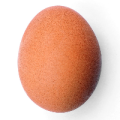








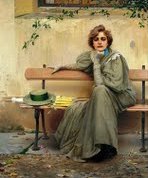


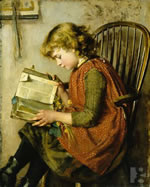




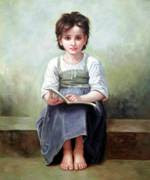














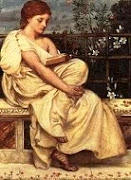

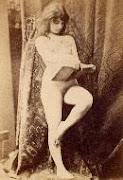














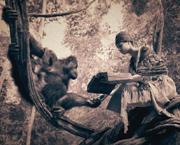

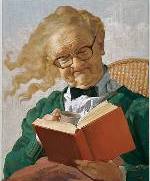






























3 comentarios:
La cita de Lamb, es la puerta de entrada al texto. En primera persona, (Lovecraft),nos oprime con el paisaje y aletea, por ahí, perdido en el texto, una presencia extraña.
Poderosa prosa, Ar Lor, e inquietante en cada descripición. Hay una sombra de amenaza que no nos deja disfrutar del paisaje, del que sólo podemos constatar una suerte de "intencionalidad", como bien dices, oprimente. Buena, pero que muy buena entrada, maestro.
Un mundo tenebroso en el que la fantasía del lector, participa hipnóticamente.
Publicar un comentario